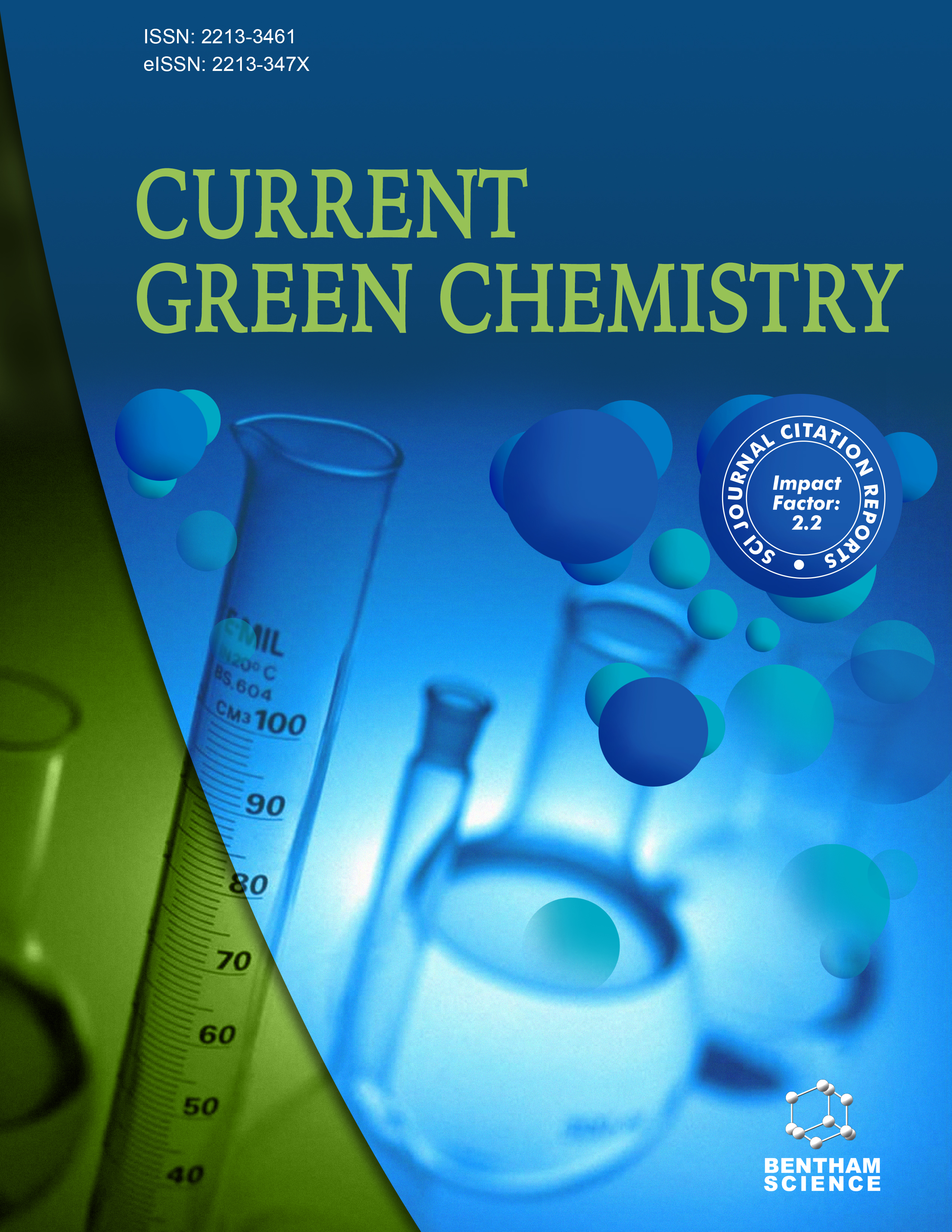- Home
- A-Z Publications
- Current Green Chemistry
- Previous Issues
- Volume 11, Issue 2, 2024
Current Green Chemistry - Volume 11, Issue 2, 2024
Volume 11, Issue 2, 2024
-
-
Organocatalysis for the Chemical Fixation of Carbon Dioxide to Synthesise N-Heterocycles
More LessOrganocatalysed reactions are becoming powerful tools in the construction of complex molecular skeletons. It gains extra importance when used as a chemical approach to the chemical fixation of carbon dioxide (CO2). Carbon dioxide is an increasingly dangerous environmental hazard as the global climate temperature rises through the greenhouse effect. Meanwhile, in the past decades, significant advances can be noted in t Read More
-
-
-
Solvent-free Approaches towards the Synthesis of Therapeutically Important Heterocycles
More LessThe development of synthetic methodologies to obtain a diverse range of heterocyclic scaffolds has been a very attractive area of research due to their vast therapeutic importance. Conventional approaches that require the use of organic solvents, which are generally flammable, toxic, and not ecofriendly, are replaced either with greener alternatives or by completely avoiding their use. In literature, several solvent-free methods Read More
-
-
-
Organic Electrosynthesis: A Promising Green Tool in Solving Key Steps for the Total Synthesis of Complex Natural Products
More LessAuthors: Ayan Bandyopadhyay and Rajib SarkarElectro-organic synthesis, an atom-efficient, sustainable, mild process, permits an ecofriendly and elegant green path to synthesize structurally complex, still valuable molecules, avoiding the use of conventional harsh oxidizing and reducing agents and long-route reaction protocols. Being one of the oldest forms of reaction setups in a laboratory, it deals with fundamental redox chemistry through the direct application of el Read More
-
-
-
Mechanochemical and Microwave Multistep Organic Reactions
More LessThe development of more sustainable chemical reactions and processes has been the focus of recent research activities. Advances in the field of organic synthesis have led to the emergence of new methodologies and techniques involving non-conventional energy sources. These include the applications of mechanical energy (mechanochemistry) and microwave radiation (MW) methods. This article reviews the advances in m Read More
-
-
-
Green and Convenient Synthesis of Pharmaceutically Active Mono and Bis-dihydroquinazolines via a One-pot Multicomponent Reaction Under Sulfamic Acid Catalysis
More LessAuthors: Amir Samiei, Mohammad A. Bodaghifard and Mahdia HamidinasabIntroduction: Multicomponent reactions (MCRs) and green chemistry are essential criteria for the development of efficient chemical syntheses for valuable organic compounds. Methods: The design, synthesis, and development of sustainable procedures for the production of novel biological and pharmaceutical molecules have gained high importance. Herein, an environmentally benign synthesis of mono- and bis-2,3-dihydroquin Read More
-
-
-
Ultrasound-Assisted Catalyst-free Synthesis of α,β -Unsaturated Amino Acid Esters and Unsaturated Amino Ketones
More LessAuthors: Guoshu Xie, Nicolas de Moura Ricketti and Béla TörökIntroduction: Sonication has been introduced as a green and effective activation method for the selective monoamination of β-dicarbonyl compounds. The simple one-pot process resulted in different substituted β-amino-α,β-unsaturated esters and ketones at room temperature with quantitative yields. Aqueous NH4OH was used as a safe and economical nitrogen source for pressurized NH3gas. The process is conside Read More
-
-
-
Ultrasound-Assisted Catalyst-Free Knoevenagel Condensation of Carbonyl Compounds with C – H Acids in Water
More LessAuthors: Goutam Brahmachari, Indrajit Karmakar, Mullicka Mandal and Bhagirath MandalAn ultrasound-assisted catalyst-free green protocol has been developed for the synthesis of a series of diversely substituted Knoevenagel condensation products from the reaction between functionalized aromatic aldehydes/isatin derivatives and substituted malononitriles as the C-H acids in water at ambient conditions. The method is simple, straightforward, and highly efficient. The major advantages of this newly de Read More
-
Most Read This Month
Article
content/journals/cgc
Journal
10
5
false
en


